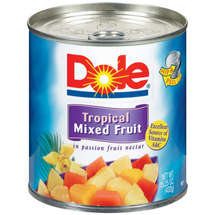Thursday, February 24, 2011
Vitamin C
Because of its widespread use as a dietary supplement, vitamin C may be more familiar to the general public than any other nutrient. Studies indicate that more than 40% of older individuals in the U.S. take vitamin C supplements; and in some regions of the country, almost 25% of all adults, regardless of age, take vitamin C. Outside of a multivitamin, vitamin C is also the most popular supplement among some groups of registered dietitians, and 80% of the dietitians who take vitamin C take more than 250 milligrams. Why is this nutrient so popular?
Vitamin C, also called ascorbic acid, is a water-soluble nutrient that is easily excreted from the body when not needed. It's so critical to living creatures that almost all mammals can use their own cells to make it. Humans, gorillas, chimps, bats, guinea pigs and birds are some of the few animals that cannot make vitamin C inside of their own bodies.
Humans vary greatly in their vitamin C requirement. It's natural for one person to need 10 times as much vitamin C as another person; and a person's age and health status can dramatically change his or her need for vitamin C. The amount of vitamin C found in food varies as dramatically as our human requirement. In general, an unripe food is much lower in vitamin C than a ripe one, but provided that the food is ripe, the vitamin C content is higher when the food is younger at the time of harvest.
The protective role of vitamin C goes far beyond our skin and gums. Cardiovascular diseases, cancers, joint diseases and cataracts are all associated with vitamin C deficiency and can be partly prevented by optimal intake of vitamin C. Vitamin C achieves much of its protective effect by functioning as an antioxidant and preventing oxygen-based damage to our cells. Structures that contain fat (like the lipoprotein molecules that carry fat around our body) are particularly dependent on vitamin C for protection.
Large supplemental doses of vitamin C can also increase levels of uric acid in the urine, because vitamin C can be broken down into uric acid. However, it is not clear that increased uric acid in the urine can increase a person's risk of forming uric acid kidney stones.
Finally, vitamin C can increase a person's absorption of iron from plant foods; and persons who have health problems related to excess free iron in their cells may want to consider avoiding high supplemental doses of vitamin C. It is important to remember that all of the above toxicity-related issues involve vitamin C in supplemental form, not as it naturally occurs in food.
Vitamin C is highly sensitive to air, water, and temperature. About 25% of the vitamin C in vegetables can be lost simply by blanching (boiling or steaming the food for a few minutes). This same degree of loss occurs in the freezing and unthawing of vegetables and fruits. Cooking of vegetables and fruits for longer periods of time (10-20 minutes) can result in a loss of over one half the total vitamin C content. When fruits and vegetables are canned and then reheated, only 1/3 of the original vitamin C content may be left. Consumption of vitamin C-rich foods in their fresh, raw form is the best way to maximize vitamin C intake.
The body's immune and detoxification systems make special use of vitamin C, and overload in either of these systems can increase risk of deficiency. The immune system relies on a wide variety of mechanisms to help protect the body from infection, including white blood cells, complement proteins, and interferons; and vitamin C is especially important in the function of these immune components.
Vitamin C is also critical during the first phase of the body's detoxification process. This process occurs in many types of tissue, but it is especially active in the liver. When the body is exposed to toxins, vitamin C is often required for the body to begin processing the toxins for elimination. Excessive toxic exposure is therefore a risk factor for vitamin C deficiency.
Vitamin C also has important interactions with other vitamins. Excessive intake of vitamin A, for example, is less toxic to the body when vitamin C is readily available. Vitamin C is involved in the regeneration of vitamin E, and these two vitamins appear to work together in their antioxidant effect.
 Most forms of cardiovascular disease, joint disease, cancer, eye disease, thyroid disease, liver disease, and lung disease require special emphasis on vitamin C intake. The process of aging itself requires special attention to vitamin C. In addition to these broader categories, several specific health conditions also require special emphasis on vitamin C. These specific health conditions include:
Most forms of cardiovascular disease, joint disease, cancer, eye disease, thyroid disease, liver disease, and lung disease require special emphasis on vitamin C intake. The process of aging itself requires special attention to vitamin C. In addition to these broader categories, several specific health conditions also require special emphasis on vitamin C. These specific health conditions include:
Buffered versions of vitamin C are also commonly available. These buffered forms usually combine vitamin C with minerals like calcium, magnesium, or potassium. Buffered vitamin C may be helpful for individuals who have stomach sensitivity, or who are taking higher doses of the supplement.
Also widely available is a metabolite complex form of vitamin C, sold commercially under the trade name Ester-C(TM), in which ascorbic acid is combined with several of its naturally occurring metabolites including dehydroascorbate, threonate, and aldonic acids.
Source: WHFoods.com
Vitamin C, also called ascorbic acid, is a water-soluble nutrient that is easily excreted from the body when not needed. It's so critical to living creatures that almost all mammals can use their own cells to make it. Humans, gorillas, chimps, bats, guinea pigs and birds are some of the few animals that cannot make vitamin C inside of their own bodies.
Humans vary greatly in their vitamin C requirement. It's natural for one person to need 10 times as much vitamin C as another person; and a person's age and health status can dramatically change his or her need for vitamin C. The amount of vitamin C found in food varies as dramatically as our human requirement. In general, an unripe food is much lower in vitamin C than a ripe one, but provided that the food is ripe, the vitamin C content is higher when the food is younger at the time of harvest.
What is the function of vitamin C?
Vitamin C serves a predominantly protective role in the body. As early as the 1700's, vitamin C was referred to as the "antiscorbutic factor," since it helped prevent the disease called scurvy. This disease was first discovered in British sailors, whose sea voyages left them far away from natural surroundings for long periods of time. Their body stores of vitamin C fell below 300 milligrams, and their gums and skin lost the protective effects of vitamin C. Recognizing limes as a good shipboard source of vitamin C, the British sailors became known as "limeys" for carrying large stores of limes aboard ship.The protective role of vitamin C goes far beyond our skin and gums. Cardiovascular diseases, cancers, joint diseases and cataracts are all associated with vitamin C deficiency and can be partly prevented by optimal intake of vitamin C. Vitamin C achieves much of its protective effect by functioning as an antioxidant and preventing oxygen-based damage to our cells. Structures that contain fat (like the lipoprotein molecules that carry fat around our body) are particularly dependent on vitamin C for protection.
What are deficiency symptoms for vitamin C?
Full-blown symptoms of the vitamin C deficiency disease called scurvy - including bleeding gums and skin discoloration due to ruptured blood vessels - are rare in the U.S. Poor wound healing, however, is not rare, and can be a symptom of vitamin C deficiency. Weak immune function, including susceptibility to colds and other infections, can also be a telltale sign of vitamin C deficiency. Since the lining of our respiratory tract also depend heavily on vitamin C for protection, respiratory infection and other lung-related conditions can also be symptomatic of vitamin C deficiency.
What are toxicity symptoms for vitamin C?
There are very few research studies that document vitamin C toxicity at any level of supplementation, and there are no documented toxicity effects whatsoever for vitamin C in relation to food and diet. At high supplemental doses involving 5 or more grams of vitamin C, diarrhea can result from the fluid in the intestine becoming too concentrated ("osmotic diarrhea").Large supplemental doses of vitamin C can also increase levels of uric acid in the urine, because vitamin C can be broken down into uric acid. However, it is not clear that increased uric acid in the urine can increase a person's risk of forming uric acid kidney stones.
Finally, vitamin C can increase a person's absorption of iron from plant foods; and persons who have health problems related to excess free iron in their cells may want to consider avoiding high supplemental doses of vitamin C. It is important to remember that all of the above toxicity-related issues involve vitamin C in supplemental form, not as it naturally occurs in food.
Vitamin C is highly sensitive to air, water, and temperature. About 25% of the vitamin C in vegetables can be lost simply by blanching (boiling or steaming the food for a few minutes). This same degree of loss occurs in the freezing and unthawing of vegetables and fruits. Cooking of vegetables and fruits for longer periods of time (10-20 minutes) can result in a loss of over one half the total vitamin C content. When fruits and vegetables are canned and then reheated, only 1/3 of the original vitamin C content may be left. Consumption of vitamin C-rich foods in their fresh, raw form is the best way to maximize vitamin C intake.
What factors might contribute to a deficiency of vitamin C?
Poor intake of vitamin C-rich vegetables and fruits is a common contributor to vitamin C deficiency. In the U.S., one third of all adults get less vitamin C from their diet than is recommended by the National Academy of Sciences, and 1 out of every 6 adults gets less than half the amount recommended. Smoking and exposure to second hand smoke also increase the risk of vitamin C deficiency.The body's immune and detoxification systems make special use of vitamin C, and overload in either of these systems can increase risk of deficiency. The immune system relies on a wide variety of mechanisms to help protect the body from infection, including white blood cells, complement proteins, and interferons; and vitamin C is especially important in the function of these immune components.
Vitamin C is also critical during the first phase of the body's detoxification process. This process occurs in many types of tissue, but it is especially active in the liver. When the body is exposed to toxins, vitamin C is often required for the body to begin processing the toxins for elimination. Excessive toxic exposure is therefore a risk factor for vitamin C deficiency.
What medications affect vitamin C?
Categories of drugs that can diminish the body's supply of vitamin C include oral contraceptives (birth control pills), NSAIDs (non-steroidal anti-inflammatory drugs including aspirin), corticosteroids (like cortisone), sulfa drugs (often used as antibiotics or in cancer treatment), and barbituates. How do other nutrients interact with vitamin C?
Vitamin C has significant interactions with several key minerals in the body. Supplemental intake of vitamin C at gram-level doses can interfere with copper metabolism. Conversely, vitamin C can significantly enhance iron uptake and metabolism, even at food-level amounts.Vitamin C also has important interactions with other vitamins. Excessive intake of vitamin A, for example, is less toxic to the body when vitamin C is readily available. Vitamin C is involved in the regeneration of vitamin E, and these two vitamins appear to work together in their antioxidant effect.
What health conditions require special emphasis on vitamin C?
 Most forms of cardiovascular disease, joint disease, cancer, eye disease, thyroid disease, liver disease, and lung disease require special emphasis on vitamin C intake. The process of aging itself requires special attention to vitamin C. In addition to these broader categories, several specific health conditions also require special emphasis on vitamin C. These specific health conditions include:
Most forms of cardiovascular disease, joint disease, cancer, eye disease, thyroid disease, liver disease, and lung disease require special emphasis on vitamin C intake. The process of aging itself requires special attention to vitamin C. In addition to these broader categories, several specific health conditions also require special emphasis on vitamin C. These specific health conditions include: - Acne
- Alcoholism
- Alzheimer's disease
- Asthma
- Autism
- Depression
- Diabetes
- Irritable bowel disease
- Parkinson's disease
What forms of vitamin C are found in dietary supplements?
Dietary supplements typically contain vitamin C in the form of ascorbic acid. Because vitamin C is better absorbed in the presence of flavonoids, many supplement manufacturers also add flavonoids to their formulas. Buffered versions of vitamin C are also commonly available. These buffered forms usually combine vitamin C with minerals like calcium, magnesium, or potassium. Buffered vitamin C may be helpful for individuals who have stomach sensitivity, or who are taking higher doses of the supplement.
Also widely available is a metabolite complex form of vitamin C, sold commercially under the trade name Ester-C(TM), in which ascorbic acid is combined with several of its naturally occurring metabolites including dehydroascorbate, threonate, and aldonic acids.
What foods provide vitamin C?
Excellent food sources of vitamin C include broccoli, bell peppers, kale, cauliflower, strawberries, lemons, mustard and turnip greens, brussels sprouts, papaya, chard, cabbage, spinach, kiwifruit, snow peas, cantaloupe, oranges, grapefruit, limes, tomatoes, zucchini, raspberries, asparagus, celery, pineapples, lettuce, watermelon, fennel, peppermint and parsley.Source: WHFoods.com
Subscribe to:
Post Comments (Atom)

Aspire Pilates Training Center & Spa
2464 W. 12600 S. Suite 190
Riverton, Utah 84065
801-302-5720
www.aspireptc.com
About Me
Blog Archive
-
▼
2011
(42)
-
▼
February
(34)
- 8 Ways to Stick to Your Diet While Friends Indulge
- Keep Your Joints Healthy
- Almond Crunch Arbonne Protein Shake
- Importance of Sleep
- Vitamin C
- Crispy Nut Butter Treats
- Sweeteners
- Water
- Dietary fiber: Essential for a healthy diet
- Piña Colada Arbonne Protein Shake
- Aerobic exercise: How to warm up and cool down
- Minerals
- Gluten Free & Vegan Peppermint Patties
- Face the Fats
- Finishing up Week 2 of the 28 Day Challenge....
- Happy Valentine's!
- What is YOUR Goal? ...
- Digestive Enzymes
- Nutty Apple Cinnamon Arbonne Protein Shake
- Relaxation
- Stress
- B Vitamins
- Arbonne Protein Powder Pancakes
- Good Carbs vs Bad Carbs
- First Week of 28 Day Challenge....
- Detoxification
- Probiotics
- Pumpkin Spice Protein Shake
- Cardio vs Strength Training
- Vitamin D
- Perfect Form
- Arbonne Protein Bars Recipe
- Monster Lo-Carb Energy Drink Vs Arbonne Fizz-tabs ...
- Proteins
-
▼
February
(34)
Followers
Powered by Blogger.






2 comments:
Hello, friends welcome to Yoga Karlo, today We write an article about Salabhasna And Also Discuss - How to do Salabhasana? , Salabhasana Step by Step Process, Benefits of Salabhasana and end the article we are discussing Its precautions and contraindications.
Post a Comment